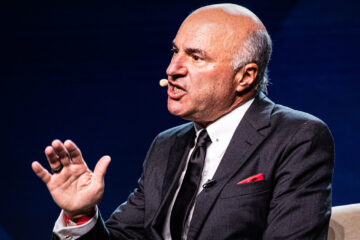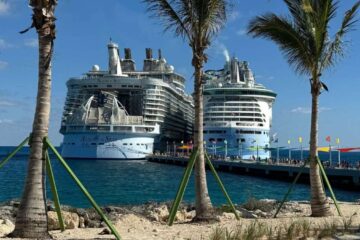Felicity Ace was carrying over 4,000 luxury cars from Germany to the United States when it caught fire.
Unfortunately, there was no happy ending to the whole “4,000 luxury cars burning at sea” saga: after a fire raged for days, the ship that was carrying the ultra-luxe vehicles went under.
MOL Ship Management, the Singapore-based company that owned 60,000-ton cargo ship Felicity Ace, confirmed that the ship sank on Tuesday morning after crews struggled to save it from a fire for nearly than two weeks.
While all 22 crew members were rescued immediately after the fire started, the 4,000 vehicles on the ship went down with it.
“Initial reports from the local salvage team state that the vessel had sunk at around 9 a.m. local time having suffered a list to starboard,” MOL wrote in a statement. “The last vessel position was around 220 nautical miles off the Azores. The salvage crafts will remain around the sea to monitor the situation.”
Why Were So Many Cars Burning At Sea?
Felicity Ace had set out to Rhode Island from Emden, Germany on Feb. 10, carrying a shipment of over 4,000 Porsche, Bentley, Audi and Volkswagen bound for U.S. dealers and buyers.
The Portuguese Navy
But six days after it set sail, an unexplained fire broke out off the coast of Portugal’s Azores islands.
It quickly overwhelmed the ship and raged for the next two weeks as salvage crews and firefighting equipment struggled to arrive and contain it.
The entire 22-person crew was rescued by helicopter to the nearest island by the Portuguese navy.
Much of how the fire started and was fought is currently unclear or not being revealed.
The New York Times reported that, according to the Portuguese navy, the ship “lost stability and sank” despite being confirmed “apparently stable, has no fires on the outside or inside, although there is a high temperature in the central area, with no smoke in its structure” on Friday.
As the situation started getting coverage, MOL also would not comment on whether the car shipment contained any electric cars. The the lithium-ion batteries within them are widely known to be more flammable than the ones within gas-powered cars.
An investigation on what caused the fire has been launched.
The Portuguese Navy
Just How Big Was The Damage?
While early statements expressed to rescue at least some of the cars aboard, the entire 4,000-plus fleet plunged into the water alongside the ship by Tuesday.
The cars aboard came from mostly luxury brands such as Lamborghini, Porsche, Bentley and Audi, with a total value estimated at over $400 million.
The environmental damage also risks being extensive. Ocean conservation nonprofit Oceana estimated that over three million liters of heavy fuel and oil could enter the ocean alongside the ship itself.
Replacing all those cars, at a time of supply chain disruptions and a global semiconductor shortage, is also an environmentally costly process. But because many of those cars were already on its way to customers who ordered them, that’s now Volkswagen’s problem.
“We are already working to replace every car affected and the first cars will be built soon,” Porsche spokesperson Angus Fitton told the Times.


